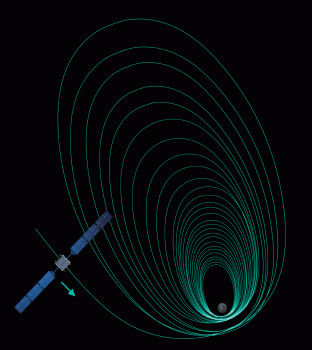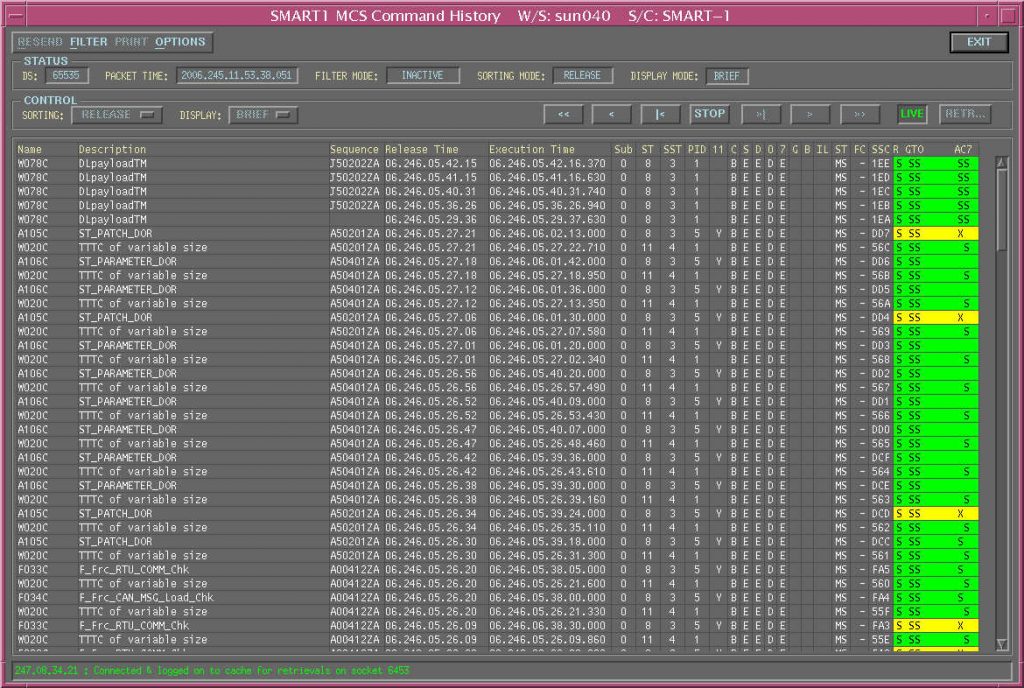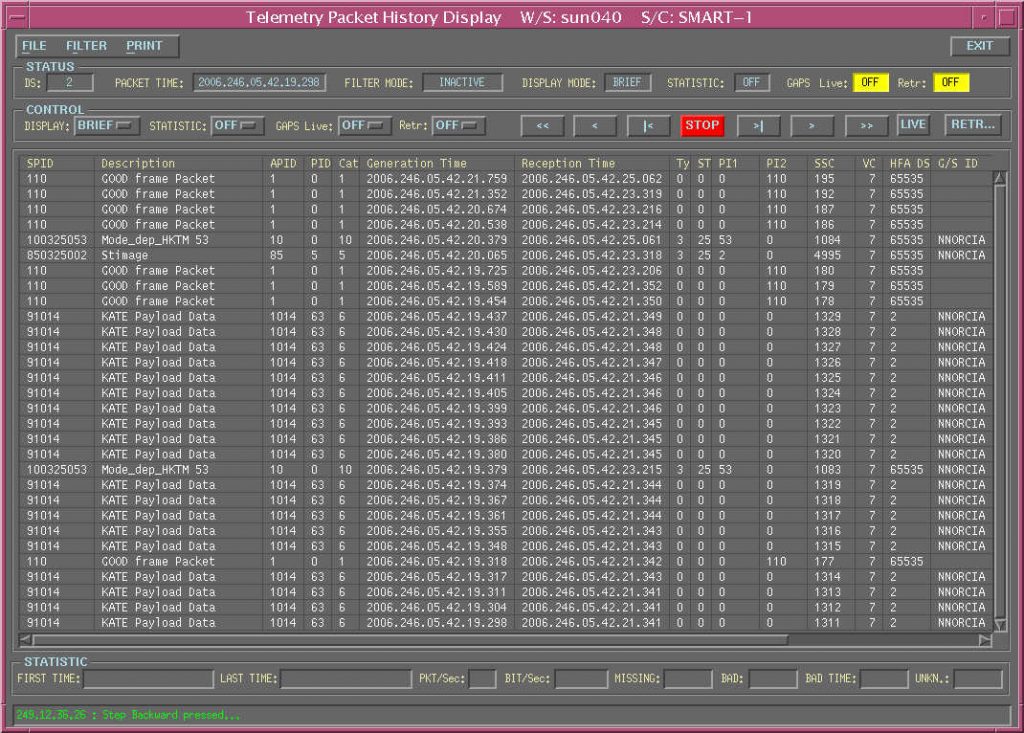A great little anniversary happens on 2 September 2016: the 10th anniversary of SMART-1’s final contact moments before its spectacular impact on the Moon on 3 September in 2006 (see comment below about leap years).
SMART-1 travelled to the Moon using solar-electric propulsion and carrying a battery of miniaturised instruments. As well as testing new technology, SMART-1 conducted the first comprehensive inventory of key chemical elements in the lunar surface. It also investigated the theory that the Moon was formed following the violent collision of a smaller planet with Earth, four and a half thousand million years ago (more info via the mission website).

Once SMART-1 has been captured by the Moon’s gravity, it begins to work its way closer to the lunar surface. Credit: ESA
ESA’s web news that day stated:
Early this morning, a small flash illuminated the surface of the Moon as the European Space Agency’s SMART-1 spacecraft impacted onto the lunar soil, in the ‘Lake of Excellence’ region. The planned impact concluded a successful mission that, in addition to testing innovative space technology, had been conducting a thorough scientific exploration of the Moon for about a year and a half.
The SMART-1 impact took place on the near side of the Moon, in a dark area just near the terminator (the line separating the day side from the night side), at a “grazing” angle between 5 and 10 degrees and a speed of about 2 kilometres per second. The impact time and location was planned to favour observations of the impact event from telescopes on Earth, and it was achieved by a series of orbit manoeuvres and corrections performed during the course of summer 2006, the last of which was done on 1 September.
For the last 16 months and until its final orbits, SMART-1 has been studying the Moon, gathering data about the morphology and mineralogical composition of the surface in visible, infrared and X-ray light.

The SMART-1 impact flash seen by the CFHT telescope
Credit: Canada-France-Hawaii Telescope Corporation
Herewith, courtesy of SMART-1 spacecraft operations engineer Rick Blake, now working on Mars Express, are a couple of historic screenshots from the mission control system.
First: A screenshot showing the last command successfully executed on board at 05.42.16.370z (07:42:16 CEST) – just 9 seconds before the last signal from the spacecraft was received via ESA’s New Norcia, Western Australia, tracking station.

SMART-1 final telecommands Credit: ESA
Second: A screenshot showing the aforementioned last telemetry – on-board status info – received at 05.42.25.062z (07:42:25 CEST).

SMART-1 final telemetry Credit: ESA
Rick points out that the final signals were received on 3 Sep 2006, which was Day 246 of that year. So, strictly speaking, the anniversary is Saturday, 3 September 2016. But since 2016 is a leap year, the day-of-the-year number is out of step with 2006 and Friday, 2 Sep 2016 is Day 246.
To cater for this, we will celebrate on both days!
Best wishes to Rick, Spacecraft Operations Manager Octavio Camino and to everyone else on the former mission operations team! Job well done!

Discussion: 3 comments
Has the tested technology found a new home in ESA missions since their test on SMART-1? And besides electric propulsion what other technologies have been tested.
The Smart-1 electric propulsion EP experience will help BepiColombo as well as future Application Missions using EP from GTO. Also: Smart-1-like micro cameras were used on Rosetta and for future Exomars.
Best regards
Bernard Foing
Sent from my iPhone
It’s interesting that the CFHT telescope apparently saw the impact flash at 5:42:15.18, while the telemetry only ended at 5:42:25.062. Clocks out of sync?